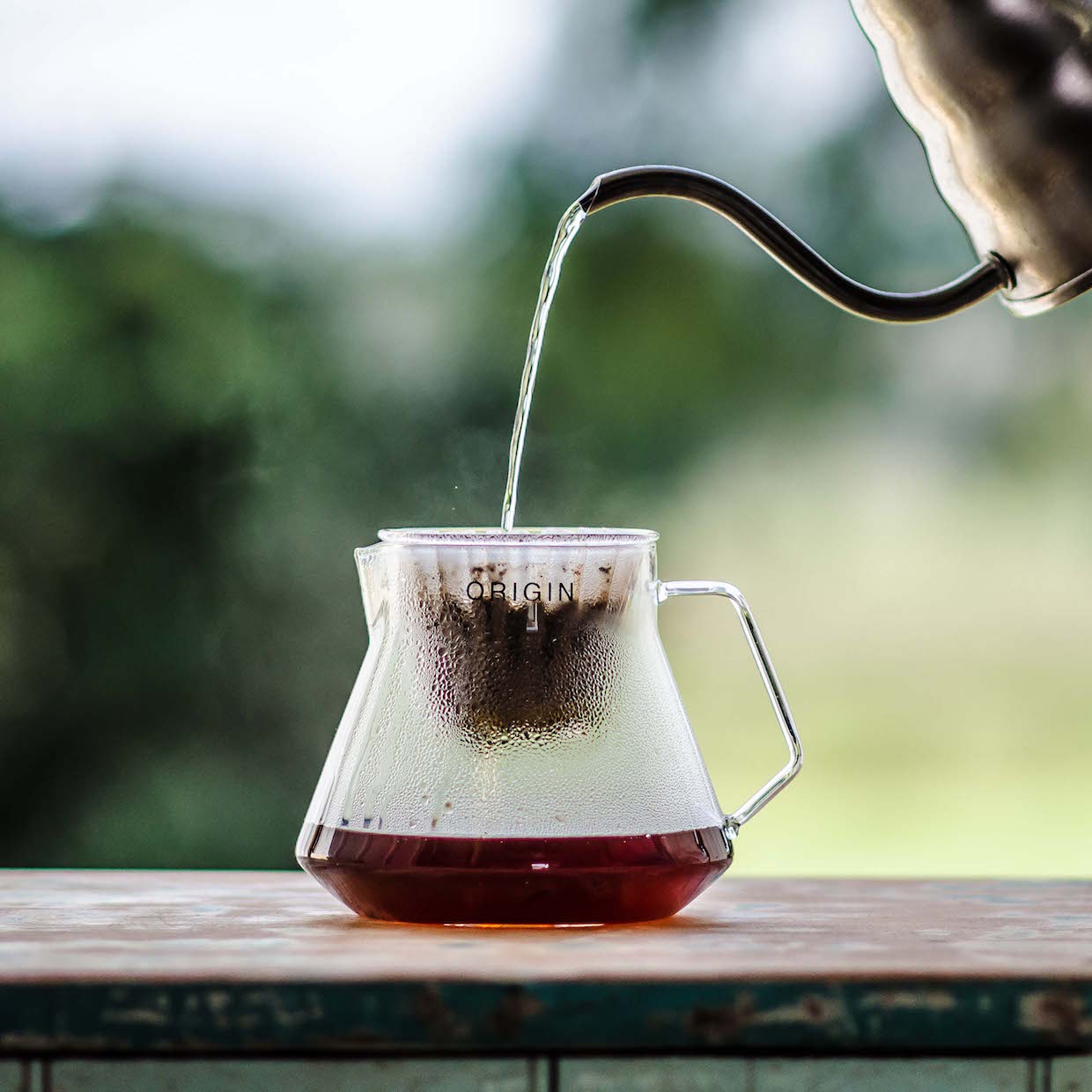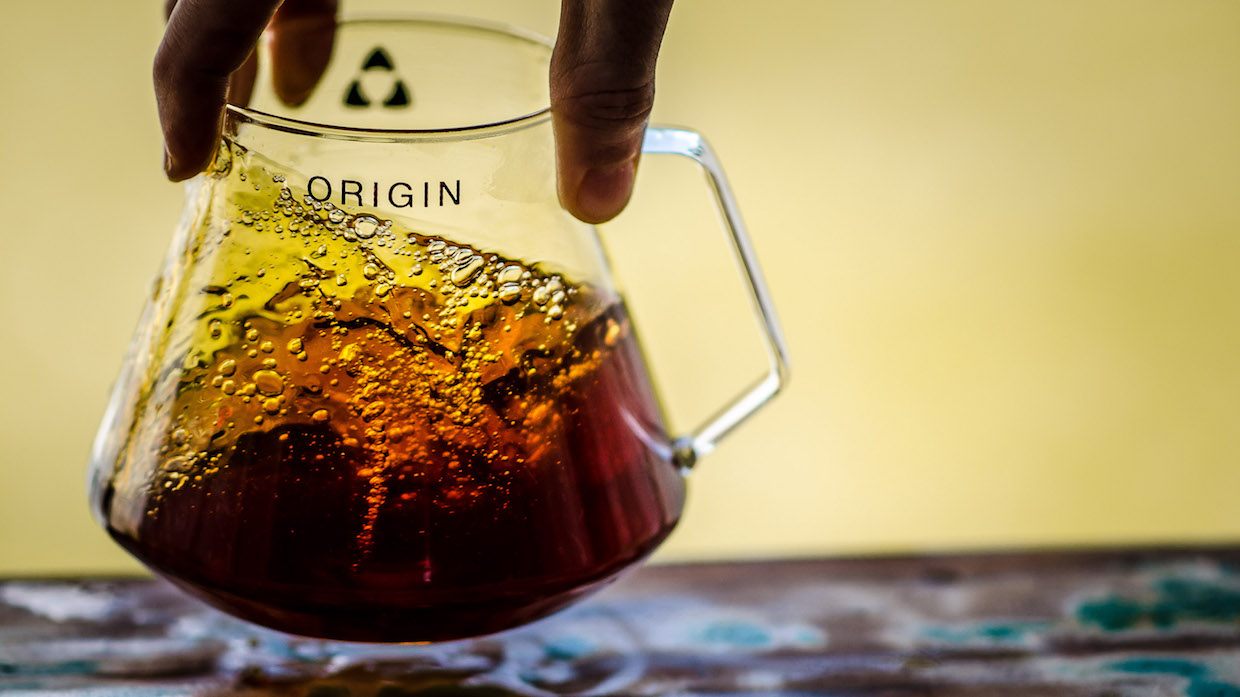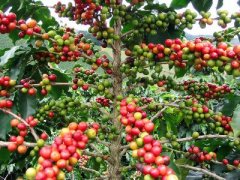Folker and Sany Coffee Company jointly create and launch a new product-coffee extraction origin decanter

All the photos of Trinity Coffee Company's Origin Decanter were taken by Trinity Coffee Co. Provide
It has been about a year since Australian designer Mark Folker's Diversified Trinity winemaker (Trinity One brewer) came to the fore, providing a variety of complex brewing methods for early adopters.
Now, Sany Coffee is introducing another brewing equipment, the Origin decanter, which provides its own flow control system that can work with or independently of the Trinity One brewery.

With the origin of the trinity beer decanter.
The Trinity One series has been expanded to include a smooth frosted black version of the beer brewer, which includes a weighted plug that can apply consistent, repeatable pressure to water in brewing rooms like Aeropress. The chamber leads to a split portafilter, which contains its own filter housing, according to its manufacturer, distinguishing the final product of Aeropress or other methods.

Matte black version of Trinity One.
The origin decanter is essentially a glass pourover beer and boat combination that accepts Kalita 155 flat-bottomed, grooved paper filters. Without a filter holding module, a separate decanter can fill 750 milliliters until it is directly below the nozzle-a convenient ability to pour wine. With the filter module in place, the container has a capacity of 500 ml, or about one or two completed cups.

Filter modules of origin are available in transparent glass, black ceramic or stainless steel, providing a variety of aesthetic and thermal insulation options. The angle of the handle, vessel wall and base is designed to respond to the geometry of the Trinity One beer machine, and according to this principle, Folker can describe the Origin as a "hands-free" beer function. Water is easily distributed on the coffee bed through the Trinity. The Trinity can also be adjusted to release slow drops in the original cold brew.

The nested design of the filter bracket in the starting container-as opposed to other foaming devices located at the top-is designed to emphasize minimal aesthetic while reducing heat loss during brewing.
Falk said: "this is achieved by reducing the journey of the filtered coffee before reaching the base of the decanter-actually half the distance of the drip head of the standard supercontainer-secondly, the additional borosilicate layer around the filter module at the top of the decanter helps to capture the heat of the filter module itself. "

Variable flow control and customizable bubbling channel modes are provided through the "grid seal" system-small silicon plugs that users can arrange to block any number or pattern of 21 discharge holes at the bottom of the original filter module.
"it's undeniable that silicone seals are a little complicated to set up at first-you really push them into drain holes like Lego," Folker said. "but once your traffic pattern is set, you don't need to change or pull the plug frequently unless you want to experiment regularly."

The production of the water decanter is already in progress and shipment is expected to begin next month. A Kickstarter campaign product has won more than 300% of the funding target. Folker said a larger version of Origin could emerge if needed, as well as other new project ideas aimed at transferring the consistency and ease of use of the weighted Trinity One gravity press to other brewing forms.

"I'm working on a product that could offer similar advantages in the dumping space-hands-free and consistent-without the high price tag required for a fully automated system," says Folker. "through our products, I hope to provide solutions to the problems that still exist in the coffee industry-this is the main problem of brewing consistency, but also a large amount of labor input and labor intensity requirements prevent many cafes from providing filters. Without having to invest a lot of money in a fully automated solution. "
Important Notice :
前街咖啡 FrontStreet Coffee has moved to new addredd:
FrontStreet Coffee Address: 315,Donghua East Road,GuangZhou
Tel:020 38364473
- Prev

Which kind of coffee beans suits you best? Looking for "Mr. Bean" quiz!
Professional baristas exchange please follow the coffee workshop (Wechat official account cafe_style) more and more boutique coffee fans in China, in fact, what is boutique coffee? It refers to coffee with a score of more than 80 points out of 100 points measured by more than a thousand cup testers around the world. Before learning high-quality coffee, you should first understand the characteristics of all kinds of coffee beans so as to find the desired "Mr. Bean". Want to
- Next

Japanese unique coffee culture Traditional coffee culture concept crushed by Japanese coffee
Professional barista exchanges Please pay attention to coffee workshop (Weixin Official Accounts cafe_style) In recent years, even in Japan, interest in coffee has been rising. This seems to affect coffee festivals at different locations from the third wave of coffee to those that do not show interest in coffee or with... One layer has now been performed. This Japanese coffee culture seems to exist overseas.
Related
- What is the standard process for the purpose of coffee cup testing? What is the difference between hand-brewed coffee and cup testing?
- How to use hand-brewed coffee paragon small golden balls? How does cold coffee lock in the aroma of coffee?
- Is American coffee black? What is the difference between American coffee and drip coffee?
- Unexpected! Well-known tea beverage brand Lele Tea will withdraw from the Zhengzhou market!
- Starbucks enters the fashion and beauty industry?! Netizen: Give me an ice American eye cream
- Why can American refills for free? The difference between Americano and American drip pot coffee
- Being chased out of the rain in front of Starbucks?! Store: Sheltering from rain under umbrellas poses a safety hazard
- The white moonlight has changed?! Lucky launches "Big Winter Pear American"
- Hand-brewed coffee three-stage method, high-sweet and universal brewing method to share! What does the high sweet water level of hand-brewed coffee mean?
- What is the difference between raw, refined and full espresso coffee? How to extract espresso and taste good?

